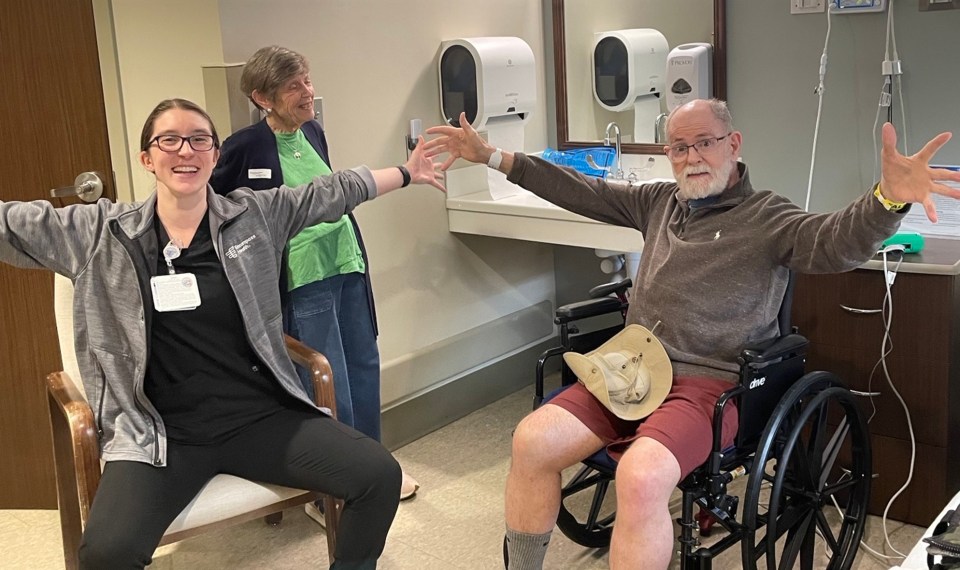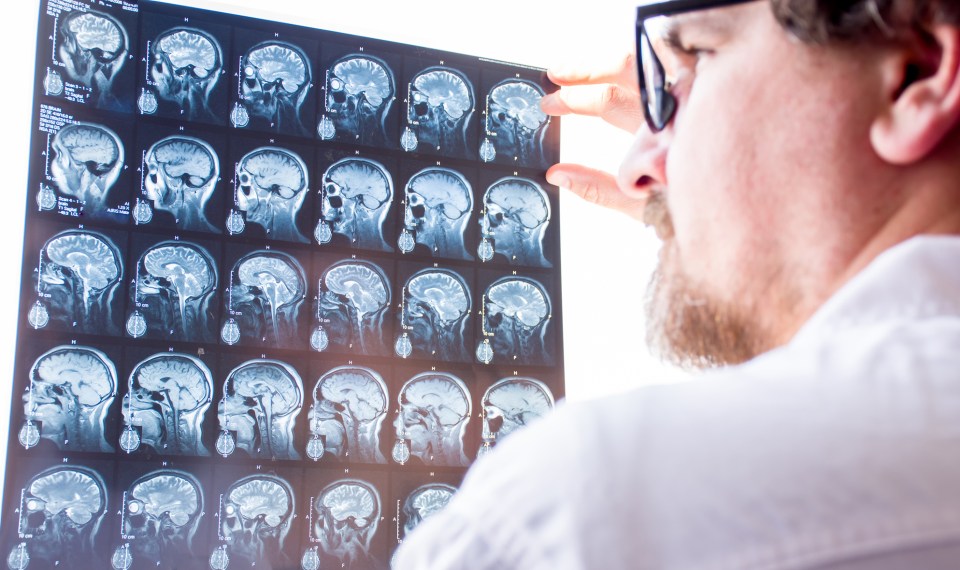When Gerald Ollhoft’s Parkinson’s symptoms began to worsen, his doctor admitted him to the hospital. He was weak, confused and struggling with his balance. After a few days there, his condition did not improve, and his care team wanted to admit him to a nursing home.
That’s when his wife and daughter stepped in to advocate for his care to get him the right Parkinson’s rehabilitation.
After touring Encompass Health Rehabilitation Hospital of Cypress, his daughter Christine said it was a no-brainer—her father would go there.
“We toured Encompass Health Cypress and were impressed with how big the gym was and all the patients there working hard in therapy,” she said. “Then we had a chance to talk with Susha Thomas and knew this was the right place for him to get the rehab he needed for his Parkinson’s.”
Thomas is director of therapy operations at Encompass Health Cypress, and she’s also the author of the book “Parkinson’s Disease: Reclaim Your Life.” While many healthcare professionals look at Parkinson’s as a progressive disease that will only get worse over time, Thomas and her therapists look at it differently.
“A lot of people just think it’s a progressive disease; they don’t go behind the mechanics and why they are demonstrating the symptoms they are demonstrating,” Thomas said. “The patient pretty much gives up hope. Then they get to rehab, and they’re doing things they never thought they could do again.”
Thinking Big about Parkinson’s
When Ollhoft entered Encompass Health Cypress, his condition had declined and he needed help getting in and out of bed. Because of weakness and balance issues, he also was having trouble performing everyday tasks and was concerned about falling.
Emily Campbell, his physical therapist, said the first step in Parkinson’s rehabilitation is retraining the brain to think big.
“We’re retraining the brain to create new pathways to not do things smaller, but to do them bigger,” she said. “It feels awkward at first, but you have to do what feels like really big movements in order for them to translate into normal movements.”
With Parkinson’s, Thomas explained, movements and other actions become smaller, which explains the Parkinson’s symptoms of shuffling and a soft voice—both of which Ollhoft was experiencing.
Encompass Health Cypress uses the LSVT BIG program with Parkinson’s patients, which is an interactive program that incorporates large movements and exercises.
“It’s a really fun program, and you can feel the difference in one session,” Thomas said. “We immediately saw changes with Gerald in the way he was transferring and his ability to balance.”
As Ollhoft continued to progress, Campbell increased the intensity of his therapy. That doesn’t mean they couldn’t have fun while doing so, though, she added.
An Individualized Parkinson’s Rehabilitation Plan
Ollhoft was eager to take part in therapy, but Campbell still wanted to make it fun and interesting for him and his unique goals.
“He was very hardworking and wanted to learn,” she said. “When I first met him, I asked him what he likes to do. He said he loves to sing musicals, and ‘Les Miserables’ was his favorite. We would play ‘Les Mis,’ and practice walking down the hallway, and he would sing to me. He’s a great guy with such a good personality.”
Ollhoft wasn’t the only one participating in his therapy; his wife and daughter also joined in.
“The exercises were fun to do, and we were there for all his sessions and would do the BIG exercises with him,” his wife said. “All of us would count outloud as we’d do the exercises and stretches. They really stretched his muscles and helped him be independent.”
Family is a key component of Parkinson’s rehabilitation, Campbell said, adding that the Ollhofts plan to continue the BIG exercises at home. Ollhoft and his wife live in an independent living community, and his biggest goal was to return there to his friends.
“My goal was to move around better. My legs felt so heavy,” Ollhoft recalled. “I wanted to be able to get up and down without the fear of falling. I wanted to walk better and get back to my independent living facility where all my friends were.”
Returning to What Matters Most
After 12 days at Encompass Health Cypress, Ollhoft accomplished his main goal and more.
“He is much more independent than when he first came in,” his daughter said. “He was able to return to independent living and have lunch with his friends. He was able to return to his previous lifestyle. We got daddy and his personality back.”
When Ollhoft left Encompass Health Cypress, he was walking up to 400 or 500 feet and was able to get in and out of bed and make transfers with the assistance of a walker. His Parkinson’s rehabilitation gave Ollhoft and his family hope that he could live with and manage the condition. Whether you are newly diagnosed or, like Ollhoft, have been living with Parkinson’s, Thomas said inpatient rehabilitation could be an option.
“My best advice is don’t give up hope,” she said. “There are things you can do to manage your Parkinson’s symptoms and reclaim your life if you get the right tools and tips. With inpatient rehabilitation, you get three hours of intensive training a day, and we’re preparing you to be successful out in the community.”
The content of this site is for informational purposes only and should not be taken as professional medical advice. Always seek the advice of your physician or other qualified healthcare provider with any questions you may have regarding any medical conditions or treatments.



